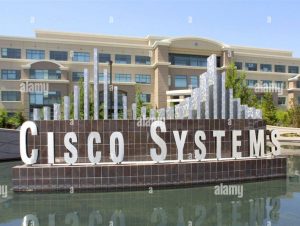Campus LAN QoS Considerations – Advanced Enterprise Campus Design
2 min read
For the access layer of a campus LAN, you can classify and mark frames or packets to apply quality-of-service (QoS) policies in the distribution layer or at the enterprise edge. Classification is a fundamental building block of QoS and involves recognizing and distinguishing between different traffic streams. For example, you distinguish between HTTP/HTTPS, FTP, and VoIP traffic. Without classification, all traffic is treated the same.
Marking (also called coloring or tagging) sets certain bits in a packet or frame that has been classified. Layer 2 has two methods to mark frames for CoS:
- Inter-Switch Link (ISL): This method is obsolete.
- IEEE 802.1p/802.1Q: This is the recommended method. The IEEE 802.1D-1998 standard describes IEEE 802.1p traffic class expediting.
Both methods provide 3 bits for marking frames. Cisco ISL is a proprietary trunk-encapsulation method for carrying VLANs over Fast Ethernet or Gigabit Ethernet interfaces. It is now an obsolete solution.
ISL appends tags to each frame to identify the VLAN it belongs to. As shown in Figure 7-14, the tag is a 30-byte header and CRC trailer added around the Fast Ethernet frame; it includes a 26-byte header and 4-byte CRC. The header includes a 15-bit VLAN ID that identifies each VLAN. The user field in the header also includes 3 bits for the class of service (CoS).

Figure 7-14 ISL Frame
The IEEE 802.1Q standard trunks VLANs over Fast Ethernet and Gigabit Ethernet interfaces, and you can use it in a multivendor environment. IEEE 802.1Q uses one instance of Spanning Tree Protocol for each VLAN allowed in the trunk. Like ISL, IEEE 802.1Q uses a tag on each frame with a VLAN identifier. Figure 7-15 shows the IEEE 802.1Q frame. Unlike ISL, 802.1Q uses an internal tag. IEEE 802.1Q also supports the IEEE 802.1p priority standard, which is included in the 802.1D-1998 specification. A 3-bit Priority field is included in the 802.1Q frame for CoS.

Figure 7-15 IEEE 802.1Q Frame
The preferred location to mark traffic is as close as possible to the source. Figure 7-16 shows a segment of a network with IP phones. Most workstations send packets with CoS or IP precedence bits (ToS) set to 0. If a workstation supports IEEE 802.1Q/p, it can mark packets. VoIP traffic from the phone is sent with a Layer 2 CoS set to 5. The phone also reclassifies data from the PC to a CoS/ToS of 0. With Differentiated Services Code Point (DSCP) at Layer 3, VoIP bearer traffic is set to Expedited Forwarding (EF) (which implies a ToS set to 5), with binary value 101110 (hexadecimal 2E). Signaling traffic is set to DSCP AF31.

Figure 7-16 Marking of Frames or Packets
As shown in Figure 7-16, switch capabilities vary in the access layer. If the switches in this layer are capable, configure them to accept the markings or remap them. The advanced switches in the distribution layer can mark traffic, accept the CoS/DSCP markings, or remap the CoS/DSCP values to different markings.




